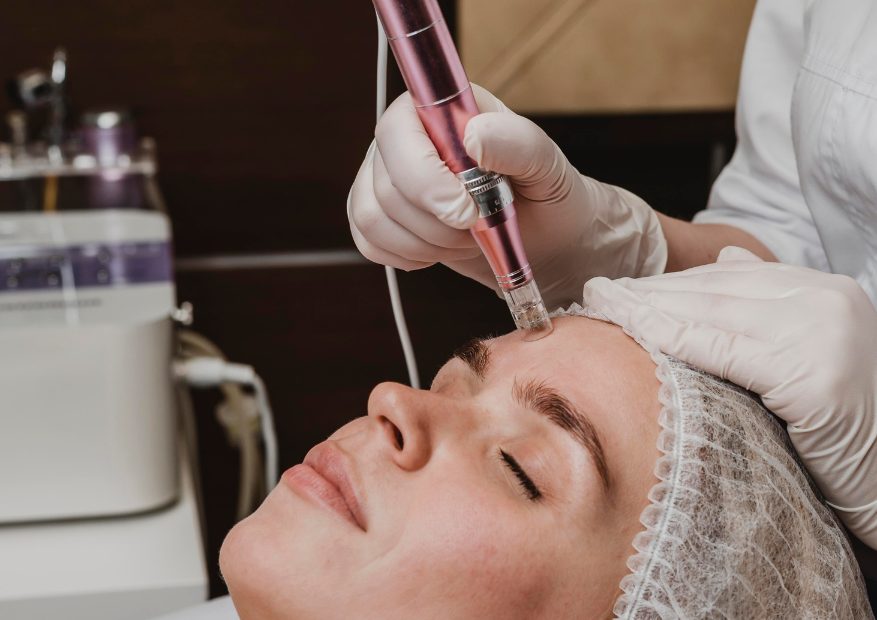Pico (picosecond) lasers are among the latest steps forward in aesthetic dermatology and skin rejuvenation. In Abu Dhabi, many people turn to Pico laser abu dhabi when they want to reduce or remove tattoos, correct pigmentation issues, or simply improve skin tone and clarity. This article explores how Pico laser works, what it can do for tattoos and pigmentation, what to expect, and answers some frequently asked questions.
What is Pico Laser Technology?
Pico lasers deliver extremely short pulses of laser energy—measured in picoseconds (one trillionth of a second). These ultra-fast pulses allow the laser to target pigment particles or tattoo ink in the skin with great precision. Because the pulses are so short, less heat is built up in the skin compared with older lasers, which helps reduce damage to surrounding tissue while breaking down pigment.
This precision makes Pico laser effective for:
- Tattoo removal (including multi‑colored tattoos)
- Pigmentation issues like sunspots, melasma, freckles, age spots
- Improving skin tone, texture, and stimulating collagen for a more even look and feel
Many clinics in Abu Dhabi offer variants or branded versions of Pico laser treatment (such as “Pico Genesis,” “Enlighten Pico,” etc.).
How Pico Laser Helps with Tattoo Removal
Tattoos are made up of ink particles that sit beneath the top layers of the skin (epidermis and into the dermis). Removing them means breaking up those particles so the body’s immune system can gradually eliminate them.
Pico lasers do this by delivering short, intense bursts of energy that shatter those ink particles into much smaller fragments. Once broken down, the body slowly clears them out over weeks to months. Because the pulses are so fast, there is less thermal damage and less risk of affecting surrounding skin.
The number of sessions needed depends on several factors:
- The colors involved (some inks or pigments respond more easily than others)
- How deep the ink is in the skin
- Size of the tattoo
- How old the tattoo is
- Skin type (how the skin responds to treatment)
Many people see noticeable fading after a few sessions, though complete removal often takes more.
How Pico Laser Helps with Pigmentation
Pigmentation refers to excess melanin or pigment in certain areas of skin, leading to uneven skin color, dark spots, sun damage, freckles, age or sun spots, and conditions like melasma.
Pico lasers can help by targeting melanin with pulses short and powerful enough to break pigment apart, allowing the body to clear it more effectively. The non‑thermal or low‑thermal nature of many Pico treatments helps prevent the heat damage that might otherwise cause pigment to spread or worsen. Many versions are designed to be safer for darker skin tones (which naturally carry more melanin) to reduce risk of pigmentation changes.
Results for pigmentation often become visible after fewer sessions than tattoos typically do. Dark spots and sun damage may lighten significantly, and overall skin tone may look more even.
What to Expect During the Treatment Process
Before the Treatment
A consultation is carried out to evaluate:
- The tattoo or pigmentation issue: color, size, depth
- Skin type and how it may respond
- Medical or skin history
- Expectations from treatment
Preparation often includes avoiding sun exposure, tanning products, certain skincare ingredients, and ensuring the skin is clean. cherieclinic.ae+2enfieldabudhabi.ae+2
During the Treatment
- The treatment area is cleaned and possibly numbed with topical anesthetic.
- The Pico laser device is applied. Depending on the system, multiple wavelengths may be used to target different pigment colors.
- The sensation might be mild discomfort or a snapping feeling, but typically well tolerated.
- Session length varies depending on area size; pigmentation or small tattoos might take less time.
After the Treatment
- Slight redness, swelling, or warmth in treated area is common immediately after.
- Pigment or tattoo ink fragments may appear darker or as tiny spots before they fade away.
- Skin needs protection from sun, gentle care, avoiding harsh topical products or exfoliants until healing.
Expected Outcomes and Number of Sessions
- Tattoo removal may require a larger number of sessions, depending on complexity (color, depth, size).
- Pigmentation correction often shows visible improvement after fewer sessions than for tattoos.
In Abu Dhabi, many clinics targeting pigmentation or tattoos with Pico lasers quote around 3‑6 sessions for pigmentation, freckles, sunspots; tattoos often require more.
Gains are generally gradual; pigmentation becomes lighter, skin tone more uniform, and tattoos fade with each session, sometimes to full removal if conditions are favorable.
Advantages of Pico Laser Compared to Older (Traditional) Lasers
- Ultra‑short pulses allow less heat buildup, reducing damage to surrounding tissue.
- More effective breaking down of ink or pigment, sometimes needing fewer sessions.
- Better suited for delicate skin, sensitive areas, or darker skin tones.
- More precise targeting of different ink or pigment colors.
Considerations (Non‑Side‑Effect)
- Not all pigments or tattoo inks are equally responsive: some colors or deep pigment may take much longer or may not fully disappear.
- Treatment effectiveness depends on how consistent sessions are, and following aftercare properly (sun protection, skin care).
- Expect fading over time, rather than instant removal. Some residual pigment might remain depending on various factors.






